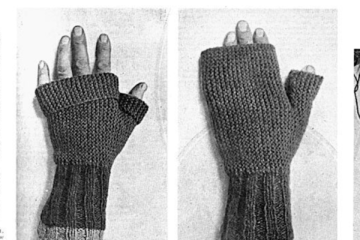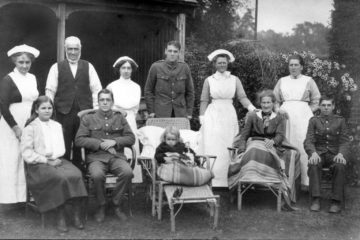In conjunction with Egham Museum’s ‘Women: Wives, Workers & War’ exhibition running from November 2018 – June 2019, Museum volunteer and researcher Geoff Meddelton explores some of the exhibition’s themes in more depth.
It has become a consensus view that the First World War was a significant turning point in the development of social and economic change in Britain during the first half of the 20th Century. Just over a hundred years ago, Nancy, Viscounts Astor became the first woman to take her seat as an elected member of the House of Commons[1]. The limited extension of the franchise to women and, only to those over the age of thirty, nevertheless marked a significant move forward in the long struggle towards wider female social, political and economic advancement.
The relatively modest progress in the enfranchisement of women in 1918 has been linked to the contribution which women made towards the war effort between 1914-1918. Whilst it might be contentious to suggest that this conflict witnessed an unprecedented mobilisation of the population, nevertheless the manufacturing of a wider sense of national consciousness made possible by the spread of literacy and the ability of government propaganda to reach a truly national audience helped to create the sense that this was, indeed, a national struggle in which all had a crucial part to play.[2] In this struggle, traditional stereotypes of gender roles were challenged and set aside in the national interest.
Many of the gains which some women made during the War were limited to the duration of the conflict. This is not surprising given that it was the impact of war, for example, which created vacancies for women to fill as so many men had been called into military service. The attempt to increase female employment in agriculture would suggest, however, that it was not the temporary nature of war which limited opportunities for women. Rather it was continued prevalence of deeply held prejudices concerning gender which held back progress on the advancement of women’s rights. Both Germany and Britain brought the war to the civilian populations of their respected protagonists by means of a naval blockade of Germany’s ports by the Royal Navy and the use of the U boat by Germany to target merchant shipping in the Atlantic. For both sides, therefore, it became imperative to increase domestic food production. This necessarily meant increasing the supply of workers in what was still a labour intensive industry of food production. There was, of course, nothing new about women employed in agriculture. In Britain, it has been estimated that on the eve of war about 190 000 female workers were so employed, which was, nevertheless, far fewer employed in the single biggest source of female occupation, domestic service (1 658 000)[3] By the end of the War, the number of women listed as employed in agriculture had risen to only 228 000, just 16 000 more than had been employed in munitions in 1914.[4] The government had certainly made a determined effort not only to increase employment in agriculture but had specifically targeted women as a potential reservoir for farm workers. From 1915, war agricultural committees were established in every county to help farmers increase the output particularly of grain and potatoes. Whilst women were urged to come forward, nevertheless the prejudice in employing women is shown in the surviving correspondence. A letter from the Prime Minister’s office to the Egham District War Agricultural Committee in the spring of 1917 suggested that women ‘cannot be expected to do work equal to that of men expert in agriculture’.[5] Such was the prejudice at the employment of women in what was considered a male occupation, that when applying for the transfer of soldiers from the home garrison for use as farm workers, Surrey farmers were warned not to displace women working on the land. Indeed, in order to encourage a greater employment of women in farm work, these farmers applying for soldier labour were incentivised by being advised that to show willingness to provide work for female workers would give them preference in any application for additional male workers; ‘ indeed a willingness to employ available women workers should be held to constitute a preferential claim for additional soldier labour if the latter is needed.’[6]
The prejudice towards the greater employment of women in farm work is surprising given that female labour had long been used in this activity and also surprising given the added emergency of war time. In early 1917, the Imperial German government initiated a new and publicised strategy of Unrestricted U Boat warfare, a strategy which considered any vessel plying the Atlantic as an enemy. Yet, a government which from 1916 had accepted the necessity of conscription of able bodied men for the armed services, was unwilling to introduce compulsion on women to fill labour shortage, even at a time when it was more imperative to increase domestic food production to meet the much exacerbated threat posed to imported foodstuffs. It seems the government was largely reliant on exhorting a collective national spirit and will; ‘the government is confident the farmers of this county (Surrey) can defeat the German submarine’.[7]
In March 1917, the Government established the Women’s Land Army. This was a bid to both encourage female employment in agriculture and to draw upon the patriotic spirit. The numbers involved, however, were very small. By the end of the war only 23 000 women had passed through the training centres established by this organisation.[8] Entry requirements were stringent, up to 50% of would be applicants were rejected.[9] In an attempt to encourage women to apply, women were given roles in recruitment and advertising. In her memoirs, Avril Caddey, an Egham resident, recalls her role as the local registrar for the Egham and Chertsey district of Surrey encouraging local farmers to take on women workers.[10] To demonstrate the skills required by newly trained members of the organisation, there were public demonstrations, such as that in the village of Shackleford on April 18th 1917 to advertise ‘the practical value of women’s work.’[11] The surviving records, however, is further testimony to the difficulty in finding agricultural employment for women. By the summer of 1917, the Egham and Chertsey District found that there appeared to be limited scope for Land Army volunteers, ‘there had been considerable difficulty in placing the recruits owing to the fact that the Government had released so many soldiers for work on the farms.’[12] As late as 1918, despite the fact there was a shortage of male farm labourers in the County of Surrey, only 728 women were employed as full time farm workers and 597 as part time.[13]
The evidence suggests that despite the potential for wartime employment for women in agriculture, the results both local and nationally were disappointing. Of course a large number of women did find occasional work in seasonal employment such as at harvest time, but the numbers were relatively small compared with employment elsewhere. One explanation for this phenomenon has been scepticism from farmers and the public about the ability of women to take the place of men on a farm.[14] Even when these initial concerns had been allayed, ‘there were lingering concerns about girls losing their femininity, not only because of the hard working nature of their labours but because land girls wore breeches.’[15] Deeply held prejudices and resistance to the employment of women on the land notwithstanding, another explanation may be that women themselves were more attracted to alternative sources of employment in war time which drew far larger numbers such as munitions and in transport, the latter saw proportionately the largest number of female recruits compared with any other occupation between 1914-1918.[16]
BIBLIOGRAPHY
Alton, David, The Home Front in the Great War; Aspects of the Conflict, 1914-1918 ( Pen and Sword, Barnsley, 2017)
Caddey, Avril, Four Score Years; Some Reminiscences of Avril D Caddey (Green and Co, Market Harborough, 1981)
Egham District War Agricultural Committee Reports; January- August 1917 (Surrey History Centre, Woking)
Surrey County Council Reports 1916-1918 (open access Surrey History Centre, Woking)
Storey, Neil and Housego, Mary, Women in The First World War (Shire, Oxford, 2011)
[1] The Coupon election held soon after the ending of the war on 14th December 1918, was the first parliamentary election in which women could stand as candidates as well as vote.
[2] During the 1540s, for example, the Tudor state at times mobilised as many as 150 000 men or 5% of the population for service in the fleet and navy alone.
[3] David Alton, The Home Front , Aspects of the Great War 1914–1918, p.95. Even at this point, the number of women in munitions exceeded that employed in agriculture by 22 000.
[4] Ibid
[5] ‘ Letter from 10 Downing Street, 5/3/1917 in ‘Egham District War Agricultural Committee Papers, January- August 1917’
[6] ‘Circular to Agricultural Executive Committees in England and Wales from the Food Production Department, 19/7/1917 in ‘Egham and District War Agricultural Committee Papers, January- August 1917.
[7] ‘Letter from 10 Downing Street, 5/3/1917, op.cit.
[8] www.womenslandarmy.co.uk/first-worldwar The same website states that up to 300 000 women took up farm work during the war on seasonal/ part time basis. This figure is still less than a third of the total number employed in munitions by 1918
[9] Neil Storey and Mary Housego, Women in The First World War, p.45
[10] Avril D Caddey, Four Score years, Some reminiscences of Avril D Caddey.
[11] ‘ War Agricultural Committee 1917, 4th Report, pp.938-960 in Surrey County Council Reports 1916–1918
[12] Ibid.
[13] ‘Surrey War Agricultural Committee 1918, 4th Report, pp.443-460, in Surrey County Council Reports 1916-1918.
[14] Ibid.
[15] Op.cit p.45.
[16] David Bolton, op .cit, p.945. Numbers employed in transport rose by five times their pre war level.





